N.C. State Fairgrounds, Raleigh, N.C.
In recognition of the opening of the 145th North Carolina State Fair this week, Flashback Friday presents this vintage photochrome postcard of the state fairgrounds.
One of the finest fairgrounds in the world. The J.S. Dorton Arena was the first structure of parabolic design, with the roof supported by cables between 90-foot concrete arches, ever built.
The photo depicted on this card was taken in 1968. Curiously, there are no throngs of fairgoers to be seen, and although there are plenty of cars parked around the exhibition halls, the vast unpaved parking lots are empty. I can only guess the photo must have been taken during a non-fair related event.
The State Fair’s Agricultural Roots
North Carolina’s cultural heritage has long been based on agriculture. Desiring to improve agriculture in the state and teach better farming methods, the North Carolina Agricultural Society organized the first state fair in 1853. The fairgrounds were located on eight acres east of the city limits between Hargett and Davie Streets.
This is C.N. Drie’s interpretation of the state fairgrounds as depicted in his well-known 1872 ‘Bird’s Eye View of Raleigh.’
During the Civil War the site was used initially as a training ground for Confederate troops, and then by war’s end as a military hospital. During the Federal occupation of Raleigh (1865-1868) the site served as a Yankee military camp. The State Agricultural Society reclaimed the fairgrounds and held its first fair since 1860 at the site in 1869.
The State Fair Moves to the ‘Country’
In 1873 the Society relocated the fairgrounds to a 55-acre tract of land west of the Raleigh city limits along Hillsboro St., an area which was largely rural and undeveloped at the time.
‘Floral Hall,’ the principal exhibition hall on the state fairgrounds at its Hillsboro St. location. Raleigh’s Fairmont neighborhood occupies this site today.
The state fair occupied this site for the next 52 years.
During the ‘Jim Crow’ era the fairgrounds were shared by  the North Carolina Industrial Association Fair, which had been established in 1879 by Raleigh educator Charles N. Hunter. His purpose was to showcase the gains that African American North Carolinians had made after slavery.
In 1884 the fairgrounds were used as the site of the month-long North Carolina Exposition.
Following the 1925 fair, the NC Agricultural Society entered into bankruptcy, and turned control of the state fair over to the state of North Carolina.
A New Era for the State Fair
The state legislature authorized the purchase of 200 acres farther out Hillsboro St. in 1926, and contracted with the Durham architectural firm of Atwood and Nash to erect permanent, fire-proof exhibition halls. The twin Education and Commercial buildings were designed in the Spanish Mission style. The state fair reopened on the site in 1928 to record crowds.
The Spanish Mission style façade of the Education and Commercial buildings on the state fairgrounds.
From the exterior, the Education and Commercial exhibition halls give the impression of a single grand building, as seen in the aerial photo below. Today both are on the National Register of Historic Places, and have earned Raleigh Historic Landmark status as well.
 This photo shows the fairgrounds while still under construction in 1928.
Many buildings were added to the fairgrounds in the ensuing years. One of my favorite structures was the whimsical ‘Waterfall.’ It was built in the 1930s and quickly became a state fair landmark. Sadly, due to severe deterioration to its wooden superstructure, the waterfall was demolished in the 1970s.
Throughout its 40-year existence, “Meet me at the Waterfall” was an annual mantra for lost children and young lovers alike.
The State Fair Comes of Age
After the Great Depression of the 1930s the state fairgrounds expanded tremendously. New buildings were erected to accommodate livestock and exhibition halls, as well as other public facilities.
Among these is undoubtedly one of the most noteworthy mid-century buildings in the country — Dorton Arena a 7,500-seat arena constructed with a unique paraboloidal roof, which permitted a view of the staging area without the hindrance of columns. The ‘Livestock Arena,’ as it was originally called, was created by the renowned Raleigh architectural designer Matthew Nowicki. It opened in 1952, and is on the National Register of Historic Places, and is a Raleigh Historic Landmark.
Dorton Arena was named in honor of longtime State Fair Manager J. Silbey Dorton in 1961. Below is a 1950s view of the state fair midway; Dorton Arena and the Waterfall can be seen in the backround.
Below, crews arrive early in the morning to set up rides on the midway of this year’s State Fair.
Goodnight Raleigh invites our readers to come out to the 2013 North Carolina State Fair, and join in the fun! — a unique experience which you will find nowhere else. It runs through next week until Sunday, Oct. 27.
Our Flashback Friday ‘photochrome’ postcard this week was published for Aerial Photography Services of Charlotte. It was printed by the Dexter Press, Inc. of West Nyack, N.Y.
Thomas Dexter Press 1934-1980West Nyack, NY
Printer of a wide variety of postcards subjects as linens and photochromes. Thomas A. Dexter was the inventor of gang printing. The Company merged with MWM Color Press in 1980 to become MWM Dexter, and they moved to Aurora, MO.
While all the photochromes printed by Dexter bore the words Genuine Natural Color they went through a variety of phases. Their early photochromes went under the name Dextone and tended to be flat and somewhat dull in appearance. As years went by their optical blending techniques improved producing richer and more varied colors.
“Flashback Friday†is a weekly feature of Goodnight, Raleigh! in which we showcase vintage postcards depicting our historic capital city. We hope you enjoy this week end treat!

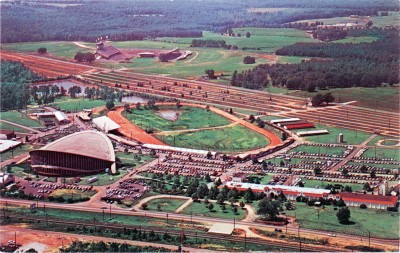

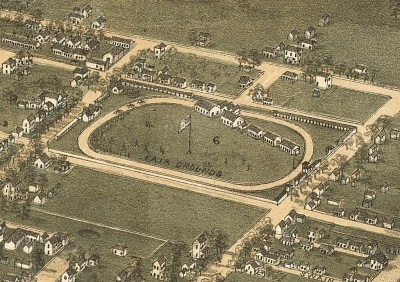
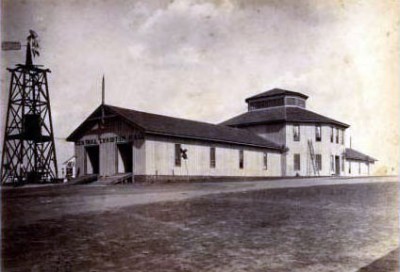
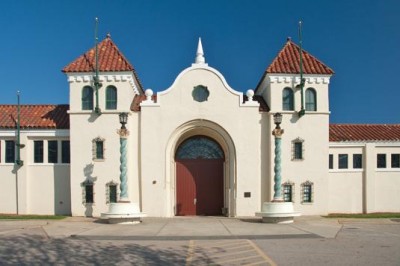
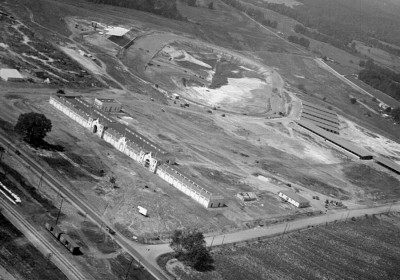
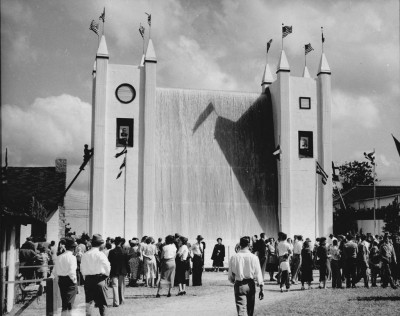
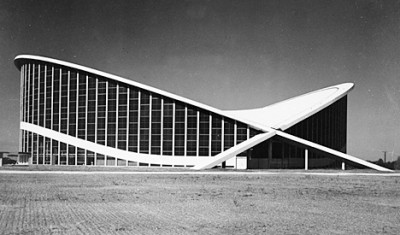
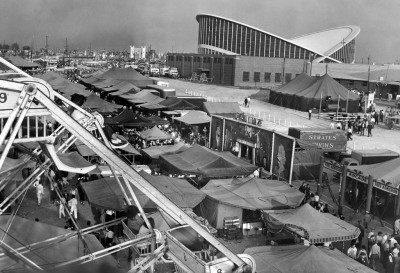

 Sign up for the Newsletter
Sign up for the Newsletter
10/18/2013
Karl–super article. Love the photos. What is that wide row thing in the background of the ’68 aerial view? It can’t be construction of I-40 can it?
10/18/2013
Great article. You really did your research! I didn’t realize the exhibition halls were that old. Construction quality was better back then I guess.
Anyway, it’s always fun to take a step back in time. Over on my blog I compiled the state fair logos over time and am thinking of writing another one this year if I can find more of the older logos: http://www.theedesign.com/blog/2012/history-of-the-nc-state-fair-logo
10/18/2013
No, Ruth, funny 1969 was the last year that I attended the NC State Fair, so this picture looks quite familiar to me.
Those row things were for parking. They were dirt and gravel. You’ll note that an early Carter (and it was not Finley, at this time) Stadium is seen in the background. Also you can see Trinity Road running parallel to the rows, it is paved and is grey in color.
I-40, or the Wade Ave Extension would be located north of the stadium. That spur of I-40 would soon be built though, in just a few years, running from the Raleigh Beltline to the RTP.
10/18/2013
Concerning the second fairgrounds site, the second site’s second horse track IS the road (mostly Pogue Street) that surrounds the rose garden (notice the oval shape) and its cost is the reason for the bankruptcy. A smaller track existed on the second site near what is Horsetrck alley between Clark and Hillsborough St.
10/23/2013
The first agricultural state fair was held close to the site where the NC Department of Motor Vehicles is located on New Bern Ave. See article – there’s an historic marker there.
10/23/2013
http://www.ncmarkers.com/Markers.aspx?MarkerId=H-45